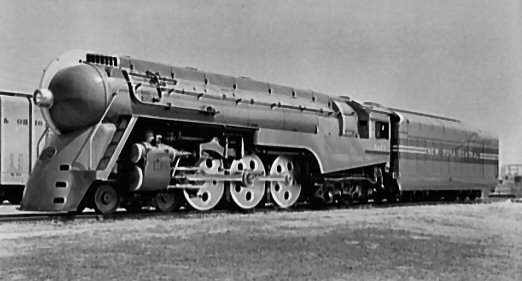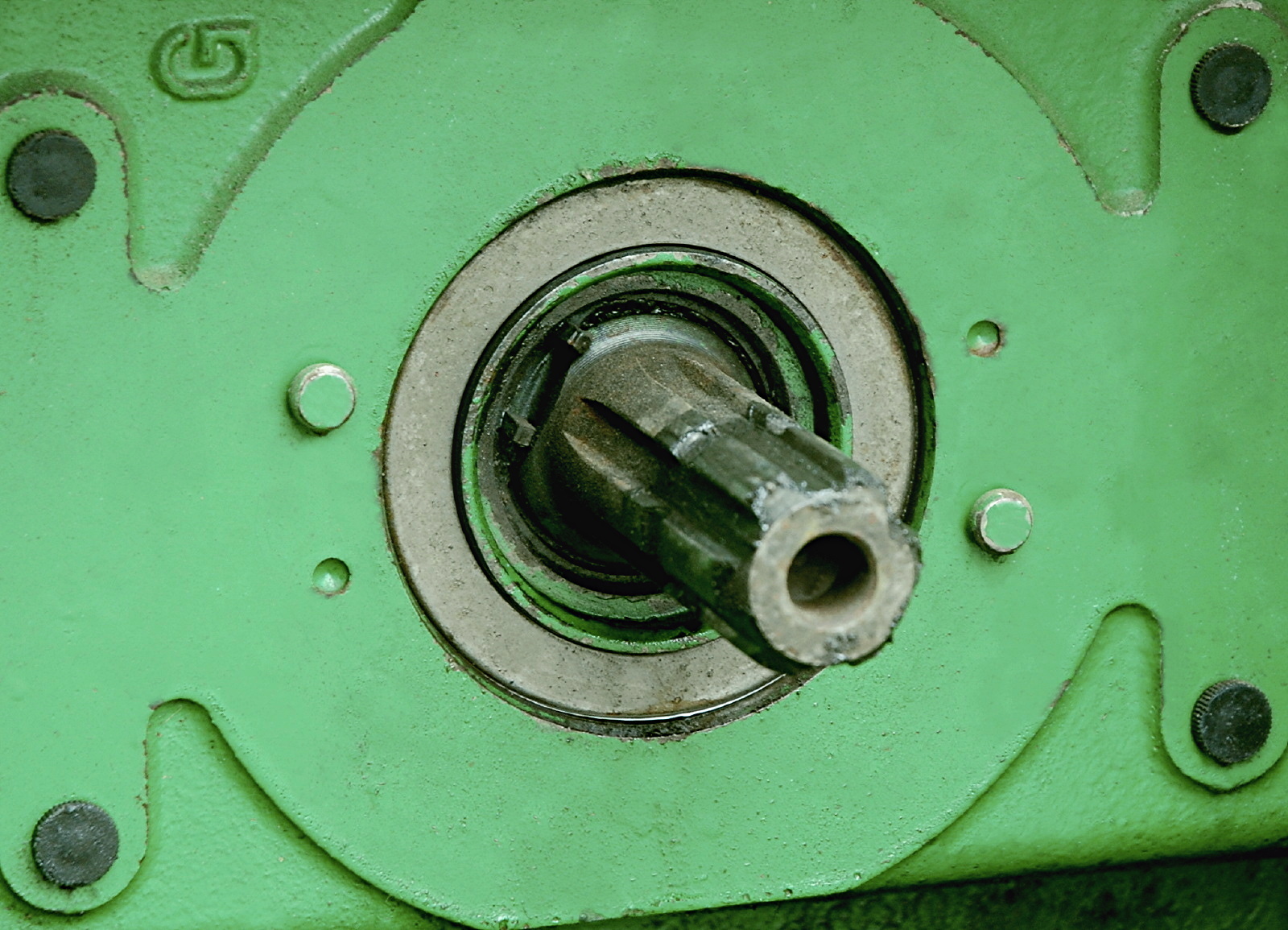|
John Deere Model D
The John Deere Model D tractor was a large standard tractor produced by John Deere from 1923 to 1953. Unlike other John Deere letter-series tractors, it kept the "D" designation throughout production, and never changed to a number designation. The D had the longest model run of any John Deere tractor. It was succeeded by the John Deere Model R. Description and production The Model D was first produced in 1923. It was a heavy standard tractor with fixed wheel widths, as opposed to the adjustable wheels of a row-crop tractor. The D was initially equipped with a two-cylinder side-by-side engine, of displacement, updated in 1927 to a engine. Early models had a two-speed transmission. In 1930 the engine was increased in power, and in 1934 a three-speed transmission was introduced. Specialized orchard models (DO), half-track and fully-tracked crawler models were also produced, along with the DI industrial tractor. By 1935 steel wheels were being phased out in favor of rubber wheels ... [...More Info...] [...Related Items...] OR: [Wikipedia] [Google] [Baidu] |
John Deere Model R
The John Deere Model R tractor was John Deere's first diesel tractor. A large, heavy tractor, it had fixed wheel widths and was not produced as a row-crop tractor with adjustable axles. The R was followed in the John Deere numbered model series by the John Deere 80, 820 and 830 tractors, which represented evolutionary upgrades to the basic R. Description and production The R was the successor to the Model D standard-tread tractor. The R had a two-cylinder side-by-side diesel engine of displacement. The R required a starter motor, which was also a two-cylinder engine, horizontally-opposed, burning gasoline to warm up the prime engine. The pony engine had electric start. In addition to being the first Deere diesel tractor, the R was the first to have a "live" power take-off, with its own clutch allowing independent control of the PTO. A cab option was available for the R. The Model R was produced at the John Deere factory in Waterloo, Iowa. 21,293 were built, at a selling price ... [...More Info...] [...Related Items...] OR: [Wikipedia] [Google] [Baidu] |
John Deere
Deere & Company, doing business as John Deere (), is an American corporation that manufactures agricultural machinery, heavy equipment, forestry machinery, diesel engines, drivetrains (axles, transmissions, gearboxes) used in heavy equipment, and lawn care equipment. The company also provides financial services and other related activities. Deere & Company is listed on the New York Stock Exchange under the symbol DE. The company's slogan is "Nothing Runs Like a Deere", and its logo is a leaping deer, with the words 'JOHN DEERE' under it. Various logos incorporating a leaping deer have been used by the company for over 155 years. Deere & Company is headquartered in Moline, Illinois. Deere & Company ranked in the 2022 ''Fortune'' 500 list of the largest United States corporations. Their different tractor series include D series, E series, Speciality Tractors, Super Heavy Duty Tractors, and JDLink. 19th century Deere & Company began when John Deere, born in Rutland, Vermon ... [...More Info...] [...Related Items...] OR: [Wikipedia] [Google] [Baidu] |
Row-crop Tractor
A tractor is an engineering vehicle specifically designed to deliver a high tractive effort (or torque) at slow speeds, for the purposes of hauling a trailer or machinery such as that used in agriculture, mining or construction. Most commonly, the term is used to describe a farm vehicle that provides the power and traction to mechanize agricultural tasks, especially (and originally) tillage, and now many more. Agricultural implements may be towed behind or mounted on the tractor, and the tractor may also provide a source of power if the implement is mechanised. Etymology The word ''tractor'' was taken from Latin, being the agent noun of ''trahere'' "to pull". The first recorded use of the word meaning "an engine or vehicle for pulling wagons or plows" occurred in 1896, from the earlier term " traction motor" (1859). National variations In the UK, Ireland, Australia, India, Spain, Argentina, Slovenia, Serbia, Croatia, the Netherlands, and Germany, the word "tractor" u ... [...More Info...] [...Related Items...] OR: [Wikipedia] [Google] [Baidu] |
Distillate (motor Fuel)
Distillate fuel, also called tractor fuel, was a petroleum product that was commonly used to power North American agricultural tractors in the early and mid-twentieth century. The product was crudely refined, akin to kerosene chemically, but impure. Characteristics North American distillate is broadly described as a fuel with heavier molecular weight than gasoline, and similar to or lighter than kerosene or No. 1 fuel oil. However, both usage of the term and formulation of the product varied widely. Octane ratings varied similarly, between 33 and 45. Usage Early railroad motor cars and tractors were offered with kerosene or gasoline-powered engines. Beginning in 1925, distillate-powered versions were offered, persisting until 1956, when the last "all-fuel" tractors were sold, while diesel-fueled tractors increased in popularity. Kerosene-engined tractors were phased out by 1934. Distillate fuel was used in machines with specific provisions for distillate, as well as all-fuel trac ... [...More Info...] [...Related Items...] OR: [Wikipedia] [Google] [Baidu] |
Waterloo, Iowa
Waterloo is a city in and the county seat of Black Hawk County, Iowa, United States. As of the 2020 United States Census the population was 67,314, making it the eighth-largest city in the state. The city is part of the Waterloo – Cedar Falls Metropolitan Statistical Area, and is the more populous of the two cities. History Waterloo was originally known as Prairie Rapids Crossing. The town was established near two Meskwaki American tribal seasonal camps alongside the Cedar River. It was first settled in 1845 when George and Mary Melrose Hanna and their children arrived on the east bank of the Red Cedar River (now just called the Cedar River). They were followed by the Virden and Mullan families in 1846. Evidence of these earliest families can still be found in the street names Hanna Boulevard, Mullan Avenue and Virden Creek. On December 8, 1845, the ''Iowa State Register and Waterloo Herald'' was the first newspaper published in Waterloo. The name Waterloo supplanted the o ... [...More Info...] [...Related Items...] OR: [Wikipedia] [Google] [Baidu] |
Henry Dreyfuss
Henry Dreyfuss (March 2, 1904 – October 5, 1972) was an American industrial design pioneer. Dreyfuss is known for designing some of the most iconic devices found in American homes and offices throughout the twentieth century, including the Western Electric Model 500 telephone, the Westclox Big Ben alarm clock, and the Honeywell round thermostat. Dreyfuss enjoyed long-term associations with several name brand companies such as American Telephone and Telegraph, John Deere, Polaroid, and American Airlines. Career Dreyfuss, a native of Brooklyn, New York City, is one of the celebrity industrial designers of the 1930s and 1940s who pioneered his field. Dreyfuss dramatically improved the look, feel, and usability of dozens of consumer products. Sometimes compared to Raymond Loewy and other contemporaries, Dreyfuss was much more than a stylist; he applied common sense and a scientific approach to design problems, making products more pleasing to the eye and hand, safer to use, and ... [...More Info...] [...Related Items...] OR: [Wikipedia] [Google] [Baidu] |
Power Take-off
A power take-off or power takeoff (PTO) is one of several methods for taking power from a power source, such as a running engine, and transmitting it to an application such as an attached implement or separate machine. Most commonly, it is a splined drive shaft installed on a tractor or truck allowing implements with mating fittings to be powered directly by the engine. Semi-permanently mounted power take-offs can also be found on industrial and marine engines. These applications typically use a drive shaft and bolted joint to transmit power to a secondary implement or accessory. In the case of a marine application, such shafts may be used to power fire pumps. In aircraft applications, such an accessory drive may be used in conjunction with a constant speed drive. Jet aircraft have four types of PTO units: internal gearbox, external gearbox, radial drive shaft, and bleed air, which are used to power engine accessories. In some cases, aircraft power take-off systems also provid ... [...More Info...] [...Related Items...] OR: [Wikipedia] [Google] [Baidu] |
Nebraska Tractor Test Laboratory
The Nebraska Tractor Test Laboratory (NTTL) is a program operated by the University of Nebraska in accordance with Nebraska law to test the performance of agricultural equipment that is to be sold in the United States for compliance with OECD standards. The NTTL has operated since 1920 as the common standard reference for tractor performance in the United States. History Impetus for the Nebraska Tractor Test Act of 1919, or Nebraska Tractor Law, came from a Nebraska farmer, Wilmot F. Crozier, who had been disappointed with the performance of several tractors he had bought. One had been marketed as a Ford tractor, but the Ford Tractor Company of the time was completely unrelated to the Ford Motor Company, and its products were of poor quality. The new law was enacted to address problems of false advertising of tractor features and capabilities, requiring that all agricultural tractors sold in Nebraska must have their performance verified by three engineers. The laboratory was establi ... [...More Info...] [...Related Items...] OR: [Wikipedia] [Google] [Baidu] |




